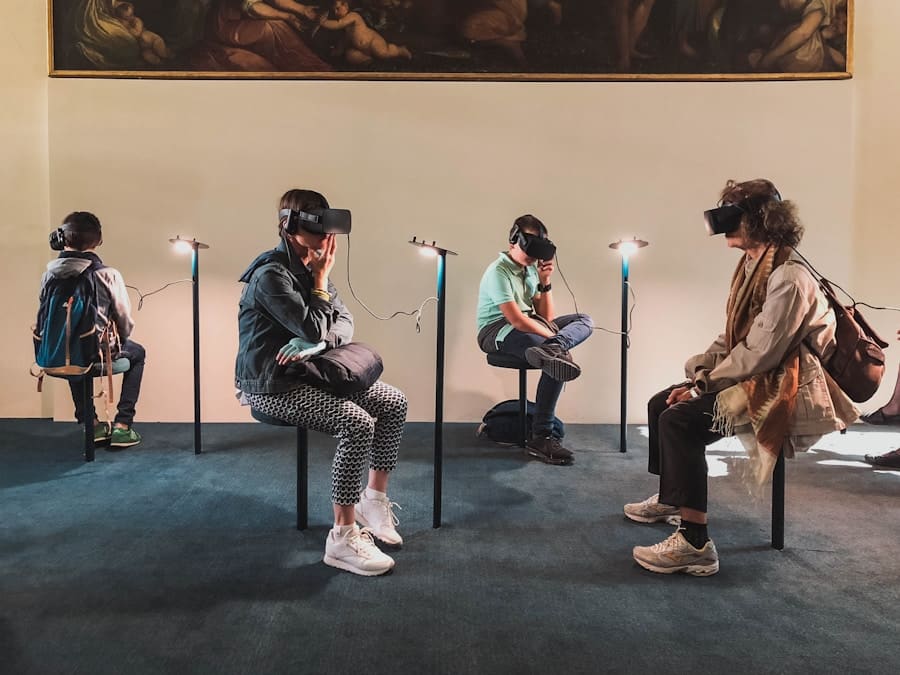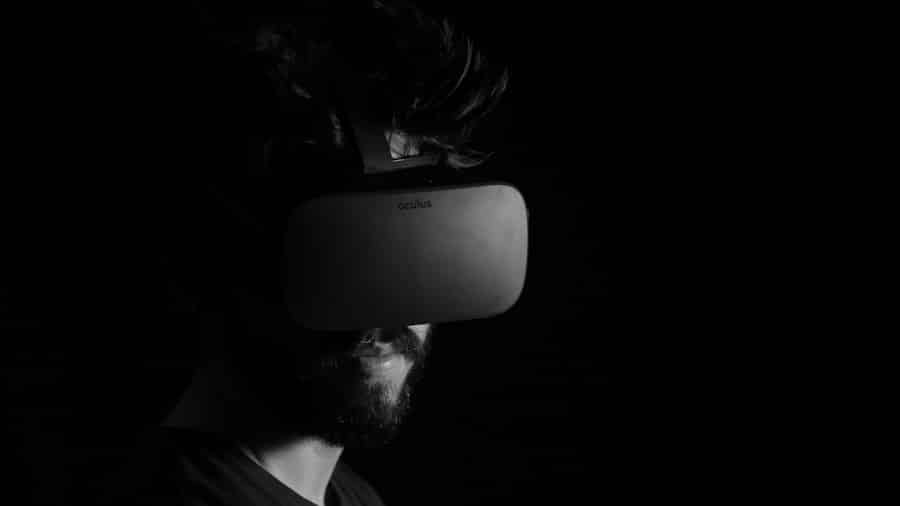Virtual Reality (VR) has emerged as a transformative technology, reshaping various sectors, including entertainment, education, and healthcare. In the realm of documentary filmmaking, VR offers a unique opportunity to immerse audiences in narratives that transcend traditional storytelling methods. By placing viewers directly within the environment of the story, VR allows for a more visceral experience, enabling them to engage with the subject matter on a deeper emotional level.
This immersive quality is particularly significant in documentaries, where the goal is often to inform, educate, and evoke empathy regarding real-world issues. The advent of VR technology has opened new avenues for filmmakers to explore complex narratives and present them in ways that were previously unimaginable. Unlike conventional documentaries that rely on a linear narrative structure, VR can create a 360-degree experience that envelops the viewer, allowing them to look around and interact with the environment.
This shift not only enhances the storytelling potential but also challenges filmmakers to rethink how they convey information and engage their audience. As VR continues to evolve, it is essential to examine its implications for documentary filmmaking and the ways it can enrich the viewer’s experience.
Key Takeaways
- VR technology has revolutionized the way documentaries are experienced, offering immersive and interactive storytelling experiences.
- The evolution of documentary filmmaking with VR technology has allowed filmmakers to create more engaging and impactful content.
- VR has a significant impact on audience engagement and empathy in documentaries, allowing viewers to experience stories in a more personal and emotional way.
- Despite its benefits, using VR in documentary production comes with challenges and limitations, such as technical constraints and high production costs.
- Case studies of successful VR documentary experiences showcase the potential of VR in delivering powerful and memorable storytelling experiences.
The Evolution of Documentary Filmmaking with VR Technology
The integration of VR technology into documentary filmmaking marks a significant evolution in how stories are told. Traditional documentaries have long relied on techniques such as interviews, voiceovers, and observational footage to convey their messages. However, with the introduction of VR, filmmakers can now create immersive environments that allow viewers to experience events as if they were physically present.
This shift began gaining traction in the early 2010s when advancements in VR hardware and software made it more accessible to creators. One of the earliest examples of VR in documentary filmmaking is “Clouds Over Sidra,” produced by Gabo Arora and Chris Milk in 2015. This groundbreaking piece transports viewers to a Syrian refugee camp in Jordan, allowing them to navigate through the camp and interact with its inhabitants.
By placing viewers in the shoes of those affected by the refugee crisis, the documentary fosters a sense of empathy and understanding that traditional formats struggle to achieve. As more filmmakers experiment with VR, we see a growing trend toward using this technology not just as a gimmick but as a powerful tool for storytelling that can evoke strong emotional responses.
The Impact of VR on Audience Engagement and Empathy in Documentaries

One of the most profound impacts of VR on documentary filmmaking is its ability to enhance audience engagement and foster empathy. Traditional documentaries often present information from a distance, which can create a barrier between the viewer and the subject matter. In contrast, VR immerses viewers in the narrative, allowing them to feel as though they are part of the story.
This immersive experience can lead to a heightened emotional response, making viewers more likely to connect with the individuals and issues being portrayed. Research has shown that immersive experiences can significantly increase empathy levels among viewers. A study conducted by researchers at Stanford University found that participants who experienced a VR simulation of homelessness reported greater feelings of empathy toward homeless individuals compared to those who viewed traditional media representations.
This finding underscores the potential of VR documentaries to not only inform but also inspire action by creating a deeper understanding of complex social issues. By allowing audiences to step into someone else’s shoes, VR can bridge gaps in understanding and promote social change.
The Challenges and Limitations of Using VR in Documentary Production
Despite its many advantages, the use of VR in documentary production is not without challenges and limitations. One significant hurdle is the technical complexity involved in creating high-quality VR content. Filmmakers must navigate various aspects such as 360-degree filming, spatial audio design, and post-production editing, all of which require specialized skills and equipment.
This complexity can lead to increased production costs and longer timelines, making it difficult for some creators to adopt this technology. Moreover, there are inherent limitations in how stories can be told within a VR framework. The immersive nature of VR can sometimes lead to disorientation or discomfort for viewers, particularly if the experience is not designed thoughtfully.
Filmmakers must carefully consider pacing, movement, and interactivity to ensure that audiences remain engaged rather than overwhelmed. Additionally, there is a risk that the novelty of VR may overshadow the content itself, leading to experiences that prioritize spectacle over substance. Striking a balance between innovation and storytelling is crucial for filmmakers looking to harness the power of VR effectively.
Case Studies of Successful VR Documentary Experiences
Several case studies exemplify the successful integration of VR technology into documentary filmmaking, showcasing its potential to create impactful narratives. One notable example is “The Hangman at Home: A Portrait of an American Serial Killer,” which immerses viewers in the chilling world of a convicted serial killer’s life through a combination of 360-degree video and interactive elements. This documentary not only provides insight into the mind of the killer but also invites viewers to grapple with moral questions surrounding crime and punishment.
By utilizing VR technology, this documentary creates an intimate connection between viewers and history, fostering a sense of remembrance and reflection that traditional formats may struggle to achieve. These case studies illustrate how VR can elevate documentary storytelling by providing immersive experiences that resonate deeply with audiences.
The Future of VR in Delivering Immersive Documentary Experiences

The Future of Immersive Documentary Experiences
The advancement of technology is paving the way for a promising future of Virtual Reality (VR) in delivering documentary experiences that are truly immersive. Upgrades to headsets, such as lighter designs with improved resolution and field-of-view capabilities, will significantly enhance the overall experience for viewers.
### Enhanced Interactive Elements
Advancements in software will enable filmmakers to create more sophisticated elements, allowing viewers to engage with content in meaningful ways. This will revolutionize the way audiences interact with documentaries, making the experience more engaging and memorable.
### Amplifying Underrepresented Voices
As more creators adopt VR, we can expect a surge in diverse narratives being explored through this medium. From environmental issues to social justice movements, VR has the potential to amplify underrepresented voices and bring attention to critical global challenges.
Ethical Considerations in Creating VR Documentary Content
The use of VR in documentary filmmaking raises important ethical considerations that creators must navigate carefully. One primary concern is the potential for exploitation or misrepresentation of subjects within immersive narratives. Filmmakers have a responsibility to portray individuals and communities authentically while respecting their dignity and privacy.
This is particularly crucial when dealing with sensitive topics such as trauma or suffering. Additionally, there is an ethical imperative to consider how immersive experiences may affect viewers’ perceptions and emotions. While fostering empathy is a key goal of many VR documentaries, creators must be cautious not to manipulate emotions or sensationalize suffering for dramatic effect.
Striking a balance between impactful storytelling and ethical responsibility is essential for maintaining credibility and integrity within the documentary genre.
Recommendations for Filmmakers and Content Creators Using VR for Documentaries
For filmmakers looking to harness the power of VR in their documentary projects, several recommendations can help ensure success. First and foremost, it is crucial to prioritize storytelling over technology; while innovative techniques can enhance an experience, they should never overshadow the narrative itself. Filmmakers should focus on crafting compelling stories that resonate with audiences on an emotional level.
Collaboration with experts in various fields—such as psychology, ethics, and technology—can also enhance the quality of VR documentaries. Engaging with professionals who understand the nuances of immersive storytelling can provide valuable insights into how best to approach sensitive topics or complex narratives. Additionally, seeking feedback from test audiences during development can help identify potential pitfalls or areas for improvement before final release.
Finally, filmmakers should remain open to experimentation and iteration throughout the creative process. The landscape of VR is continually evolving, offering new tools and techniques that can enhance storytelling possibilities.
In a recent article on enicomp.com, the importance of choosing the right smartwatch for viewing pictures is discussed. Smartwatches can enhance the immersive experience of VR documentaries by providing a convenient way to view additional content or related images. By selecting a smartwatch that allows for easy picture viewing, users can further engage with the documentary experience. To learn more about which smartwatches are best for this purpose, check out this article.
FAQs
What is VR?
VR stands for virtual reality, which is a computer-generated simulation of an environment that can be interacted with in a seemingly real or physical way by a person using special electronic equipment, such as a helmet with a screen inside or gloves fitted with sensors.
What is an immersive documentary experience?
An immersive documentary experience is a form of documentary storytelling that aims to deeply engage the audience by creating a sense of presence and immersion in the subject matter. This can be achieved through the use of VR technology to create a more interactive and realistic experience for the viewer.
How does VR enhance documentary experiences?
VR enhances documentary experiences by allowing viewers to feel like they are physically present in the environment being depicted. This can create a more emotional and impactful connection to the subject matter, as well as a deeper understanding of the issues being explored.
What are some examples of VR documentaries?
Some examples of VR documentaries include “The Click Effect,” which explores the underwater world of dolphins, and “Clouds Over Sidra,” which takes viewers inside a Syrian refugee camp. These documentaries use VR technology to create a more immersive and impactful experience for the audience.
What are the challenges of using VR for documentary storytelling?
Some challenges of using VR for documentary storytelling include the high cost of production, the need for specialized equipment, and the technical expertise required to create a seamless and immersive experience. Additionally, there are concerns about the potential for VR to be used in a manipulative or exploitative way.

